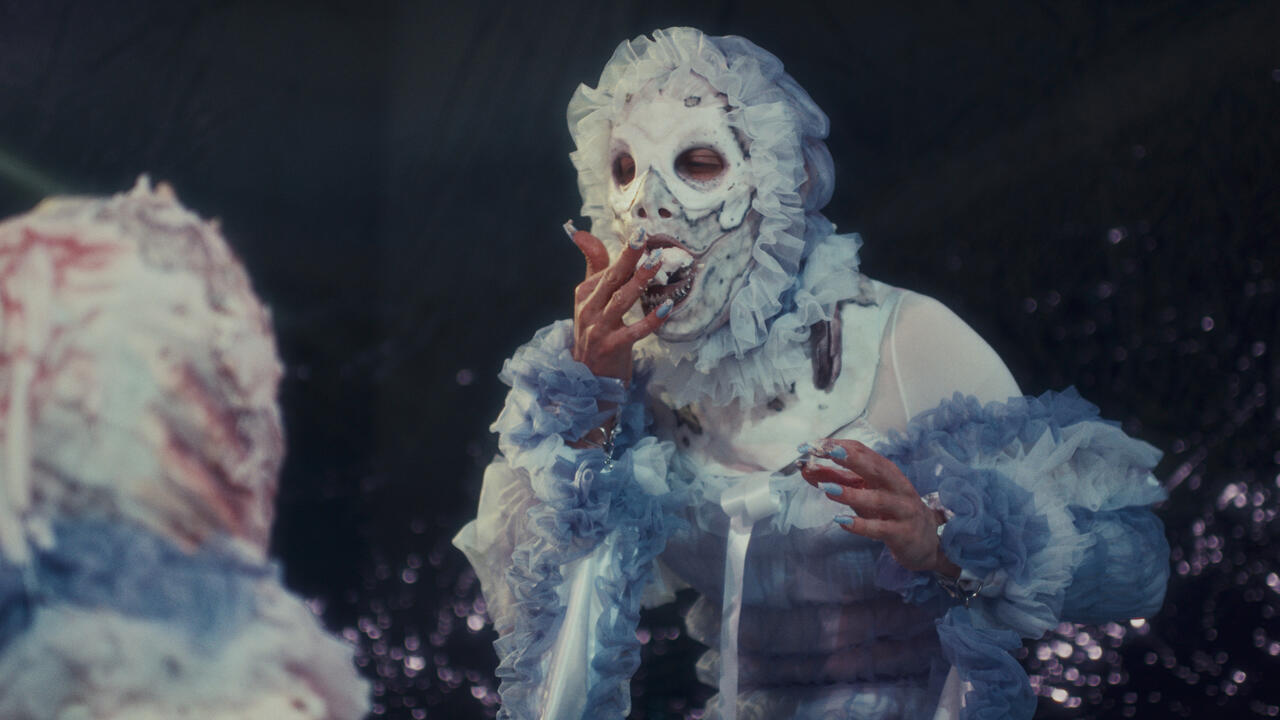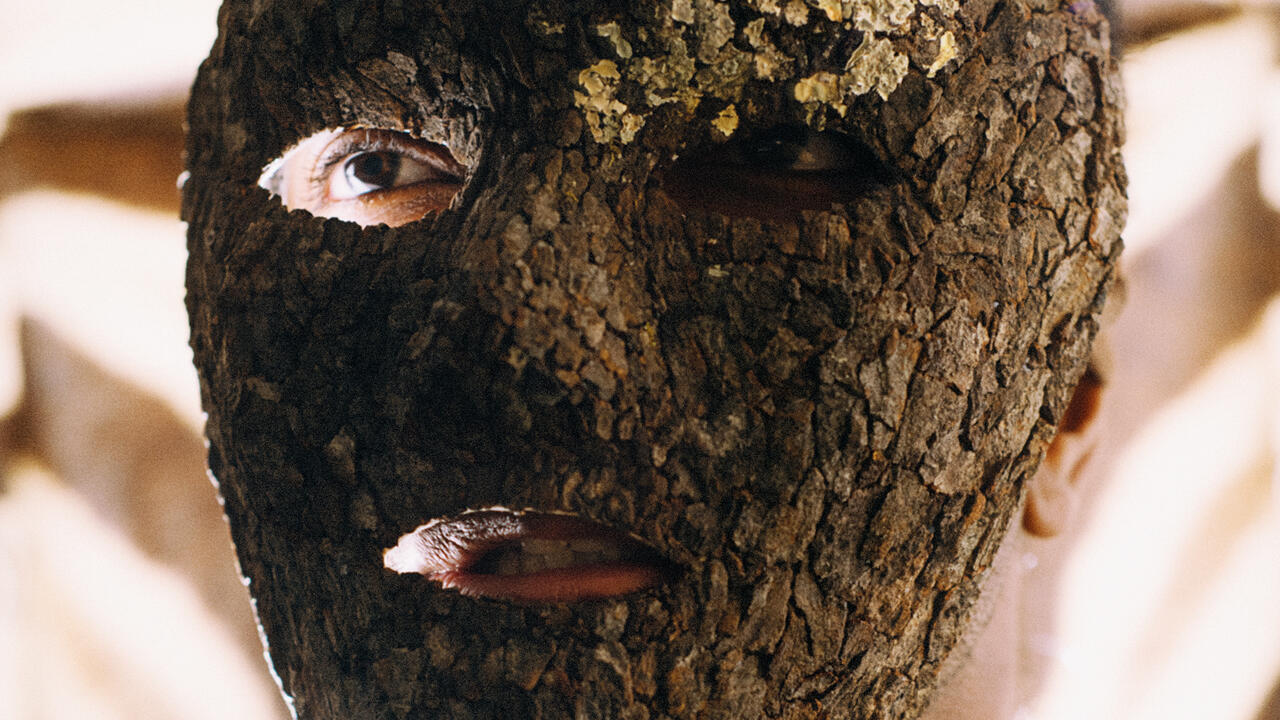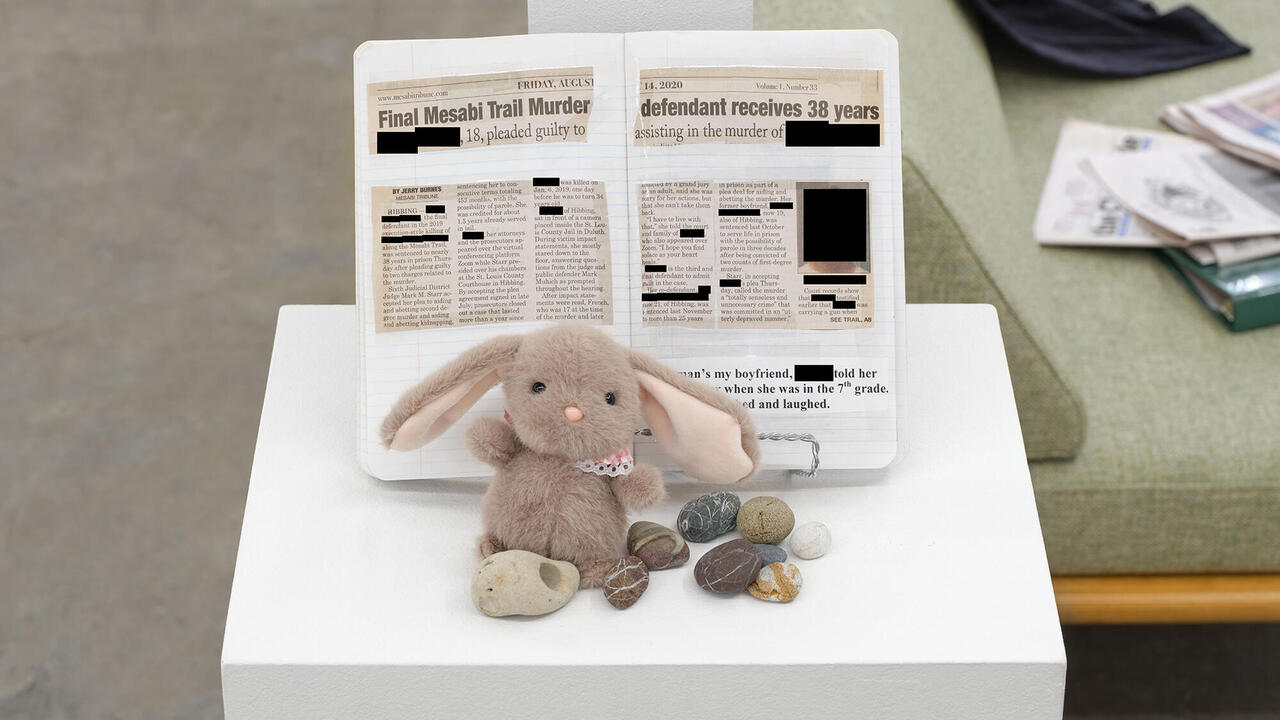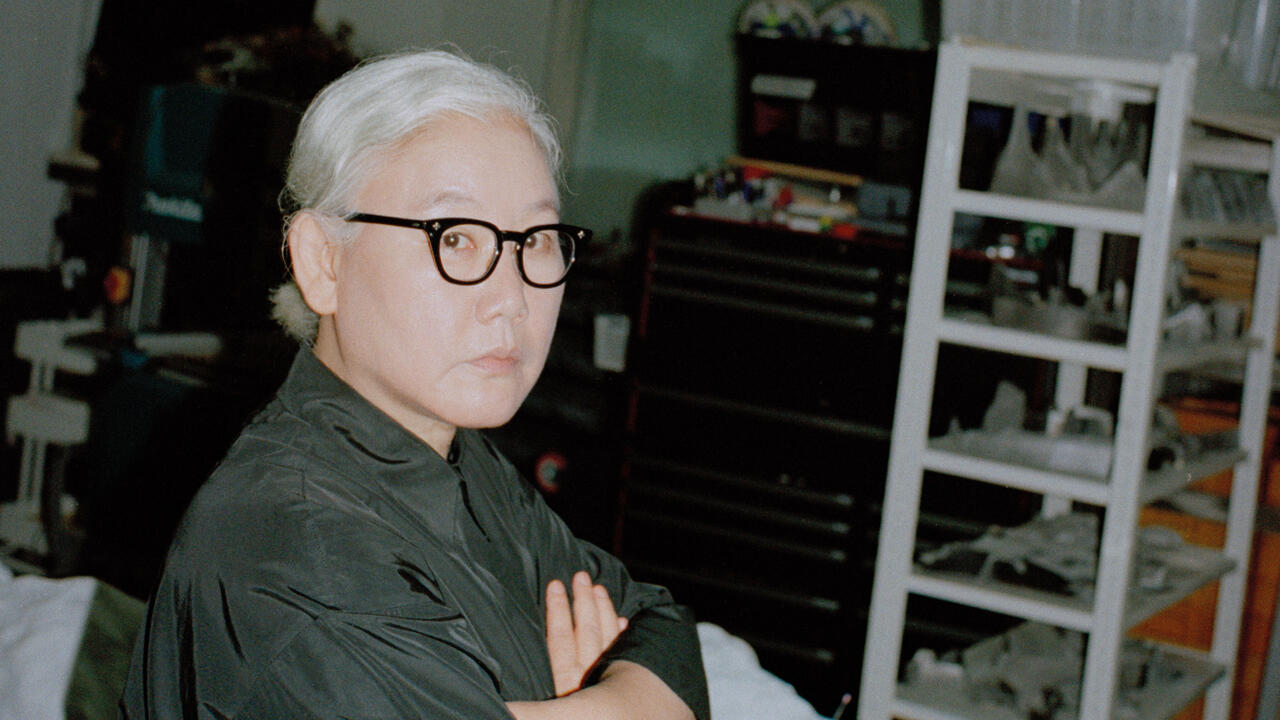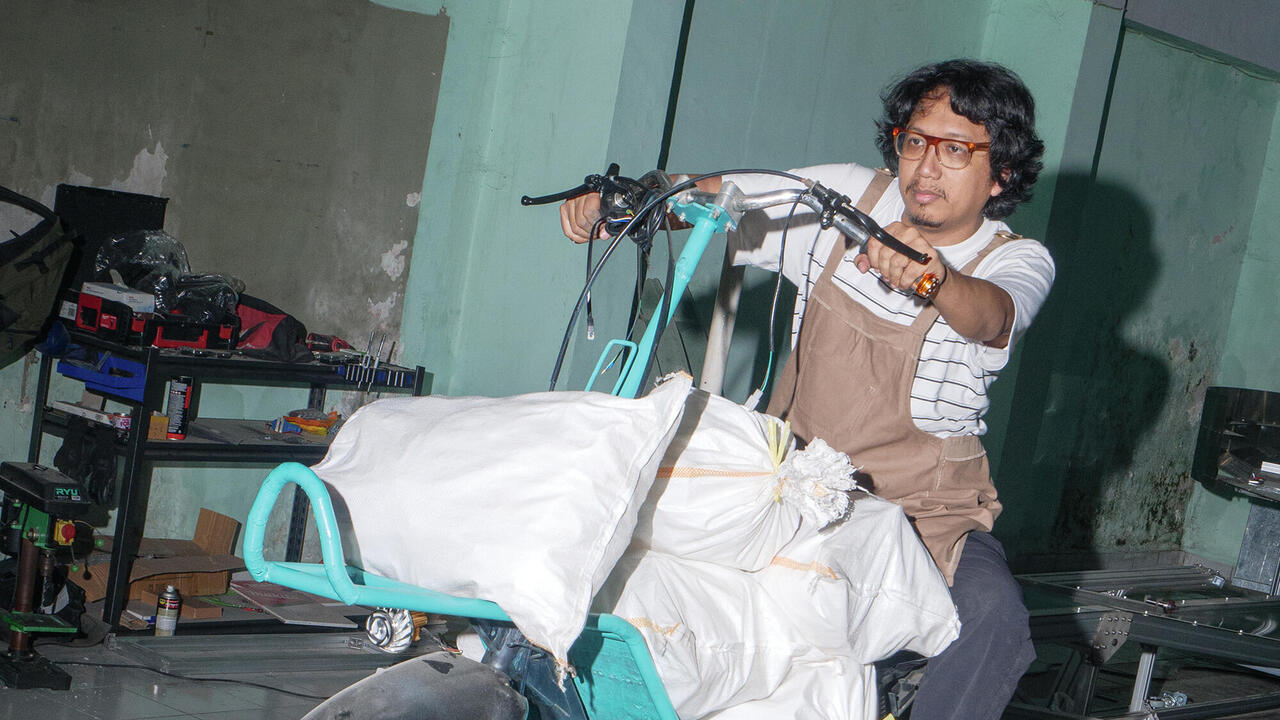Sense and Sensuality
As a new biography of the author is published, revisiting Kathy Acker's writing on literature, logic and the libido
As a new biography of the author is published, revisiting Kathy Acker's writing on literature, logic and the libido

Kathy Acker (1947–97) was bigger than life, hugely charismatic, a rock-and-roll bad girl who drove a motorcycle and wrote filthy, difficult books that blasted social realism to hell. If she had been a visual artist, Acker might not only have found fame but have made a living. The literary marketplace marginalizes avant-garde writers and Acker’s books never sold well, but she did manage to establish a certain notoriety, more so in the UK than the US, where she was reduced to teaching part-time, like the rest of us. Twenty years after her death, and with a new biography by Chris Kraus just published, how does the work hold up in Acker’s absence?
In the early 1980s, when I decided I wanted to be a writer of avant-garde prose, there was a dearth of living female role models. Kathy Acker saved my creative life. The first time I saw her read, she was wearing a grey mini-dress with a little ruffled skirt and bleached pixie hair. She was posed awkwardly on a stool that was too tall. I remember a spotlight beaming down on her, but maybe that’s just the intense focus of my recollection. She read slowly, articulating carefully, certain that what she was reading was of vital importance. I didn’t understand what she was doing; I didn’t need to. Acker magnetized an excitement I latched onto, greedily.
Women in Acker’s realm are both oppressed and sexually ravenous. She taught me it’s okay to talk dirty; she gave permission to use the word ‘cunt’. She spoofed dominant social norms, but always with amazing sincerity rather than the tedious irony that plagues so much postmodern literature. She parodied female masochism, pushed it to the point of flinching queasiness, yet she also embodied female masochism, owned it. When she discovered the diaries of Laure (the pen name of Colette Peignot, mistress of French philosopher Georges Bataille), they validated for Acker her instinct that female abjection is fertile subject matter. She so deeply resonated with Laure, she made her the protagonist of her novel My Mother Demonology (1994). Acker’s own work, in turn, offers me a model for exploring my powerlessness – without the pseudo-feminist mandate to force that into a narrative of triumph. She taught me to misbehave in writing, to follow my passion regardless how uncomfortable that made me feel, that discomfort is a laudable goal in writing. She taught me that writing about power and sex is a political necessity.
Language was Acker’s battlefield. She believed that those who controlled images and language controlled reality. Her narrators tend to be wide-eyed and confused, desperate to understand the meaning of language that doesn’t belong to them. Their very naivety allows them to see through the smokescreen of Western culture’s authorized version of reality. Their vision is pathetic and biting. From My Mother Demonology: ‘Paint was covering everything. That must mean that I destroy either myself or the world whenever I fuck.’ Here, Acker uses the syntax of rationality (‘that must mean’) to undercut conventional logic, revealing a psycho-logical, dreamlike interpretation. For Acker, the self is always communal, a text comprised of a zillion other texts. Her early novels rewrite master narratives using female protagonists; Acker’s 1986 version of Don Quixote, for example, opens in an abortion clinic. In a 1989 interview with Ellen G. Friedman, Acker said that her aim in Don Quixote was to do a Sherrie Levine painting in prose.

In later works, Acker moved beyond simple copying to intricate collages. In visual terms, I think of the assemblages of Bruce Conner or Jess, both of whom were working in San Francisco when Acker lived there (on and off, between 1973 and 1996). Like her literary forebear William Burroughs, Acker used the cut-up as a tool for subversion. Lacking ordinary narrative propulsion, her books can be picked up anywhere. Plot comes in waves and spasms as identities split and fragment. Jumbling the invented, the remembered, the seen and the stolen, Acker unmasks the mechanics of the illusion, the hoax of rationality. It’s like she’s throwing back the curtain on the Wizard of Oz, over and over again.
From her novel Empire of the Senseless (1988): ‘In an unreasonable world, reason isn’t reasonable.’ In some ways, Acker’s writing resonates even more with the state of the world today than when it was written. In the 21st century, reason is being abandoned and replaced with a libidinal tribalism – take the headline of a recent opinion piece in The Washington Post: ‘You can’t govern by id.’ Acker’s spoofs of rationality suggest that governance has always been directed by base instinct. Donald Trump’s clumsy buffoonery makes that highly apparent and we’re scared shitless. The ‘reasonable’ veneer of civilization has grown extremely thin.
When Acker died of breast cancer in 1997, her admirers feared that, without her fabulous public persona, her work would sink into obscurity. I wonder if it isn’t the other way around. Perhaps Acker’s star power interfered with her work’s reception. She complained how she wasn’t taken seriously in the UK, how she was treated like an exotic pet. ‘‘‘Piss, fuck, shit” scrawled over a page,’ she told Ellen G. Friedman. ‘This appalls the literary establishment. When I appeared on a radio programme, the announcer said: “We now have Kathy Acker, the author of Blood and Guts in High School [1984]. She’s the most evil person in the world.”’ Acker’s fame was awfully close to infamy.
Kathy Acker taught me that writing about power and sex is a political necessity.
Bereft of Acker’s charismatic machine, we have nothing left but her texts – around two dozen novels and collections are in print – and the more time I spend time with her writing, the more I’m convinced of Acker’s genius. Yesterday, I reread the ‘Clit City’ section of My Mother Demonology. ‘Clit City’ takes place in a girls school mashed together from schools depicted in Dario Argento’s 1977 gore masterpiece, Suspiria, Radley Metzger’s 1968 softcore adaptation of Violette Leduc’s Thérèse and Isabelle (1966), what appear to be Acker’s own memories of attending a swanky girls school, and a wealth of other attributed and unattributed sources. Acker shifts modes constantly and without warning, holding it all together through the simple technique of a non-differentiated narrative ‘I’. Her violations and subversions of the original texts are both creepy and hilarious, always pointing towards the political, the mythic and the vulgar. In one memorable scene in Suspiria, maggots fall from the ceiling onto the girls’ heads and shoulders. In Acker’s version, the girls scream that the maggots are coming from their cunts. Finally, their headmistress explains that maggots come from dead meat: rotting meat stored in the attic caused them. The text then shifts into the devastations of factory farming and the resultant BSE, or mad cow disease, ending with: ‘Though we had learned that our cunts and vaginas aren’t the sources of disease, we had no idea how to get rid of maggots. We had been fed on the meat.’ That last sentence hits you like a slap, her deviously simple language capturing the no-way-out of late capitalism. In Acker’s fluid landscape, there’s little difference between being in the belly of the beast and having the beast in your belly.
Acker both loses herself in her texts and yet totally exposes herself. She taught me to approach the world without filters. I think of Requiem (1997), the opera libretto she wrote in her last year of life, in which she filters her cancer diagnosis through the Electra myth while baldly confronting the horror of the disease. ‘But I was very scared: the growing fear that I felt was so great that it seemed just about to take me over. I was about to stop being.’ It takes a red-hot fearlessness to go so tender. Acker never stopped seeing beyond the surface, never stopped being motivated by libidinal urges, the terrible problem of desire, never stopped being bigger than life, scarily powerful and vulnerable, equally so, both glamorous and geeky. With her, these weren’t contradictions. Even in her critical writing, Acker transcended dichotomies in order to let in the visionary. Contradiction exists for those duped by Western rationality, for those of us who don’t have the guts to open our hearts and allow the world to flush through.
Main image: Kathy Acker, 1995. Courtesy: Getty Images





